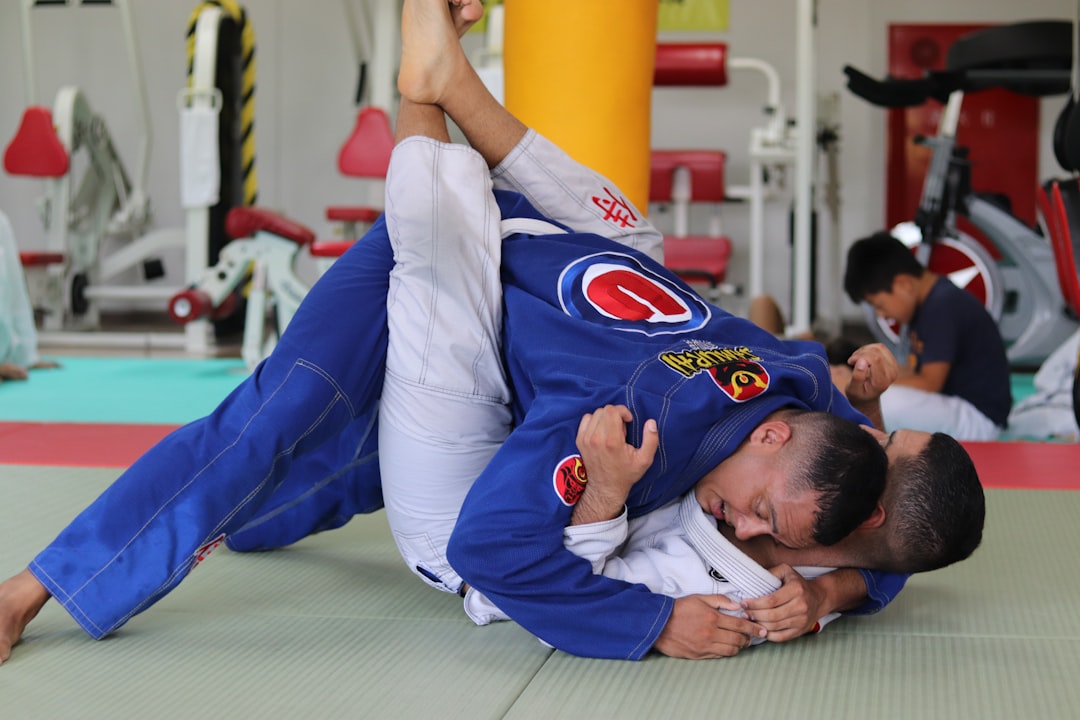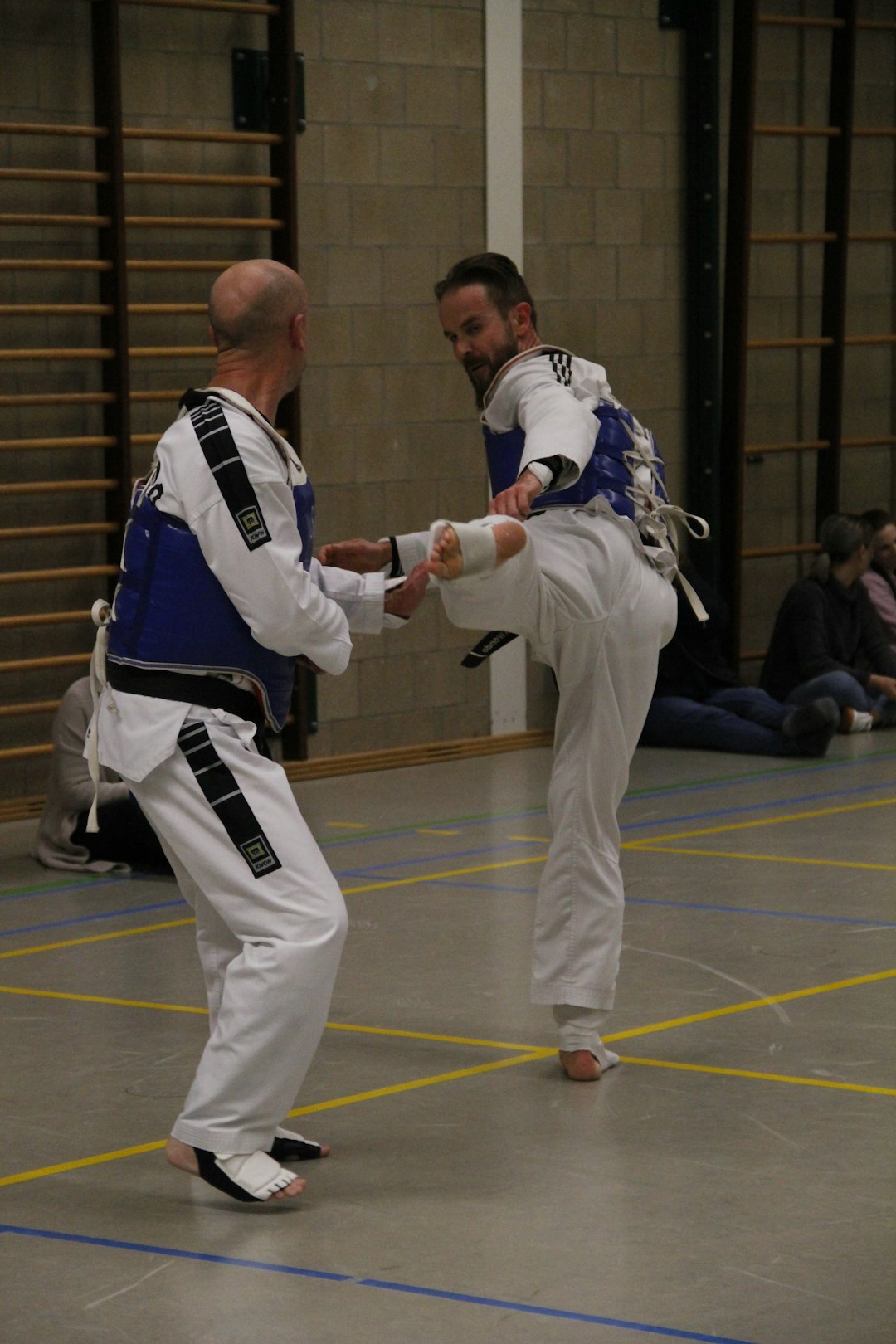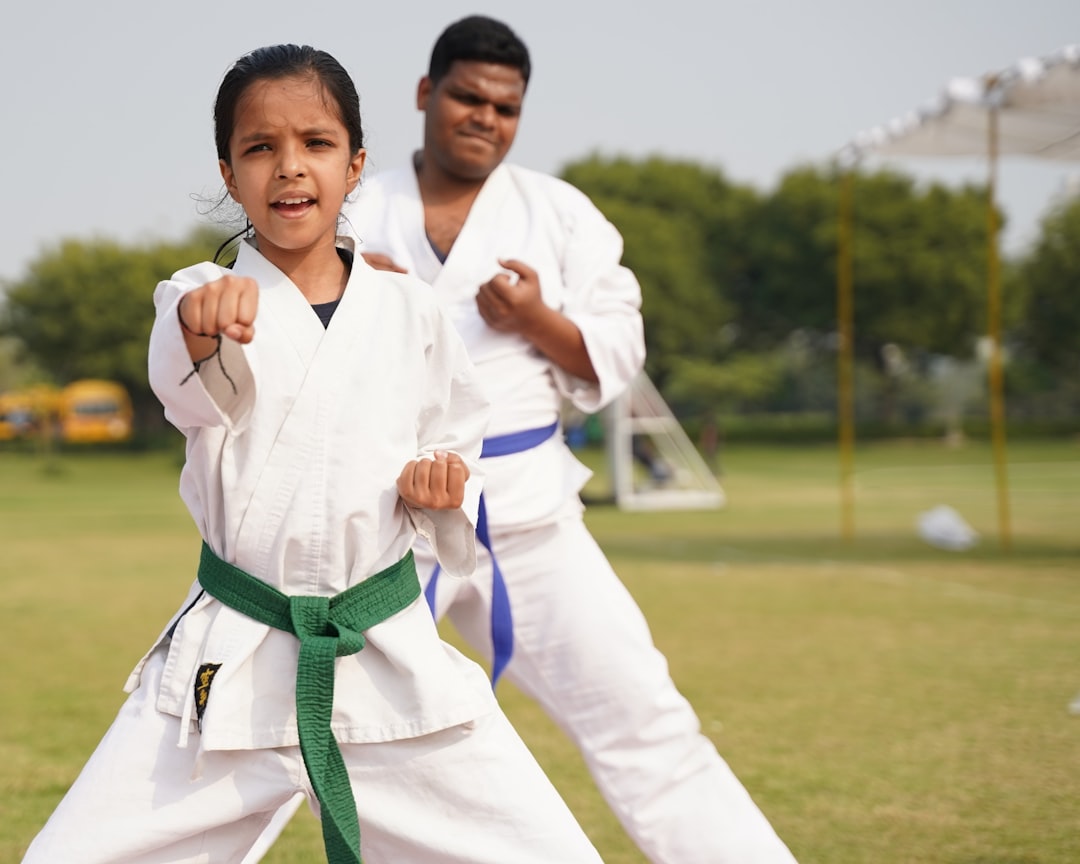When practicing karate, selecting the appropriate karate uniform name—a breathable and durable gi—is key for comfort and respecting martial arts traditions. The ideal gi should fit well, allowing for unimpeded movement during practice and competitions. For safety, especially in sparring, protective gear such as gloves, shin guards, gum shields, and groin guards are essential to prevent injuries and ensure optimal training performance. While the classic white gi is traditionally recommended for beginners to advanced practitioners, it's important to choose one that fits correctly, offering a balance between coverage and mobility. Additionally, depending on the style and intensity of your karate practice, you may need extra protective equipment like hand protectors, knee pads, or target boards for kata practice. Investing in quality gear not only enhances safety but also improves the effectiveness and overall experience of your karate training.
Embarking on a journey in karate requires more than just dedication and discipline; it necessitates the right equipment to ensure safety, comfort, and proper technique. This comprehensive guide delves into the essentials of karate, from the quintessential white uniform known as a keikogi to the specialized tools that enhance practice and performance. We’ll explore the key elements of protection and safety gear, gearing up with insights on what to look for in impact-resistant equipment. Additionally, we’ll cover accessories that optimize your karate experience, tailored for aspiring martial artists. Whether you’re a beginner or an experienced practitioner, understanding the tools of the trade is crucial for mastering this dynamic art.
- Karate Essentials: The Comprehensive Guide to Karate Uniforms and Training Gear
- Gearing Up: Understanding the Key Elements of Karate Protection and Safety Equipment
- Mastering the Art: Specialized Tools for Karate Practice and Performance
- Optimizing Your Karate Experience: Accessories and Additional Items for Aspiring Martial Artists
Karate Essentials: The Comprehensive Guide to Karate Uniforms and Training Gear

When practicing karate, the right attire and training gear are paramount to ensure comfort, safety, and adherence to the martial art’s traditional standards. A key component of a karateka’s ensemble is the karate uniform, also known as a gi. This garment not only reflects the discipline’s rich heritage but also allows for ease of movement during practice and competition. The traditional karate gi typically consists of a jacket, trousers, belt (obi), and often a belt to tie around the waist for added security. Selecting the appropriate size and material is crucial; cotton is preferred for its breathability and durability. Does one need a specific type of karate uniform? Yes, a classic white gi with reinforced knees and pre-bled fabric is recommended for beginners and seasoned practitioners alike.
In addition to the gi, essential training gear includes footwear designed specifically for karate, such as karategi or mawashi. These are flat-soled shoes that provide grip without compromising the natural motion of the feet. Protection gear like gum shields and groin guards are also recommended, especially during sparring sessions to prevent injury. Moreover, practicing with a partner requires focus pads or punching bags for effective striking technique development. Are there any other items necessary for comprehensive karate training? Yes, additional equipment includes a wall-mounted focus mitt for practicing strikes against a stationary target and a bamboo practice sword known as a bokken, which is used to learn the fundamental principles of swordsmanship in some karate styles. These tools, alongside the gi and protective gear, are essential for a well-rounded karate training experience.
Gearing Up: Understanding the Key Elements of Karate Protection and Safety Equipment

When gearing up for karate, it’s crucial to prioritize protection and safety to perform at your best while minimizing the risk of injury. A fundamental piece of equipment is the karate uniform, specifically designed to facilitate movement during practice and competition. The uniform, often referred to as a gi, should fit properly, allowing for full range of motion without being overly restrictive. Does the karate uniform provide the necessary flexibility and comfort? Absolutely, as it is tailored to accommodate the dynamic movements inherent to karate practice. Additionally, protective gear such as gloves and shin guards are essential for beginners and advanced practitioners alike, as they offer cushioning and support during high-impact techniques like punches and kicks. Are these protections mandatory for all karatekas? Yes, they are highly recommended, especially when sparring, to prevent injuries and enable you to train effectively without compromising your safety. Other protective items may include gum shields, headguards, and groin guards, depending on the style of karate and the intensity of training. How do these additional protections enhance the training experience? They significantly reduce the risk of injury and promote a safer environment for all participants in the sport.
Mastering the Art: Specialized Tools for Karate Practice and Performance

When preparing for karate practice or performance, having the right equipment is crucial to ensure both comfort and safety during training. A proper karate uniform, often referred to as a gi, is essential for all practitioners. The gi should be made of a durable, heavy cotton fabric that allows for ease of movement while providing coverage necessary for the various techniques performed in karate. Does the gi offer a balance between mobility and modesty? Yes, it does. The traditional white gi not only signifies a beginner’s humility but also reflects the discipline inherent to the martial art. It is important to choose a gi that fits well without being too tight or too loose, as this can affect your performance and comfort during practice.
In addition to the gi, protective gear such as gloves and shin guards are recommended for higher belts engaging in sparring or kumite. These protective items safeguard both the practitioner and their partner from injury during contact drills. Are protective measures taken into account for effective training? Absolutely. The choice of gloves, for instance, can vary from light padding for kata practice to full-finger protection for competitive sparring. Shin guards are equally important, as they protect the legs during kicks and blocks. Selecting the right equipment not only enhances your training experience but also ensures that you or your training partner do not sustain unnecessary injuries.
Optimizing Your Karate Experience: Accessories and Additional Items for Aspiring Martial Artists

Choosing the right equipment is paramount for optimizing your karate experience and ensuring that you get the most out of your training. A high-quality karate uniform, also known as a gi, is essential for comfort and proper technique execution. The uniform should be made of a durable, breathable fabric that allows for ease of movement while providing sufficient coverage. Does the texture of the material cause irritation? Opt for a cotton or a cotton-polyester blend gi, which offers both durability and comfort. Additionally, consider the fit; it should be neither too tight nor too loose, as this can affect your ability to execute certain techniques properly. Are you unsure about the sizing? It’s advisable to consult with a seasoned practitioner or a knowledgeable seller to find the perfect size for your body type.
Beyond the gi, there are several accessories that can enhance your karate practice. Protective gear such as gum shields and shin guards are important, especially when practicing or sparring with partners. Do you engage in contact sparring? Ensure you have the appropriate protective equipment to prevent injuries. Hand protectors can also be beneficial for beginners who are still developing their striking power. Are you practicing kata or performing high kicks? Consider investing in a karate belt or mawashi dachi, which will protect your hands and knees during practice. Additionally, a well-balanced bobumyaku (bunkaki board) is a must-have for honing your striking accuracy and technique. Remember, the right equipment not only supports your body but also contributes to the quality of your training and overall karate experience.
When stepping into the world of karate, selecting the right equipment is paramount to ensure proper technique, safety, and performance. This guide has delved into the essentials of karate uniforms, from the traditional gi to the specialized garments designed for optimum movement and durability. It has also shed light on the critical protection and safety gear required to practice karate with confidence and security. Aspiring martial artists have learned about the tools that can master their art, as well as the accessories that can enhance their experience. In essence, the key takeaway is that a comprehensive set of karate equipment, including the well-regarded karate uniform names, plays a pivotal role in one’s journey through this disciplined and enriching martial art. With the right gear, practitioners can focus on perfecting their skills, pushing their boundaries, and embracing the transformative power of karate.
